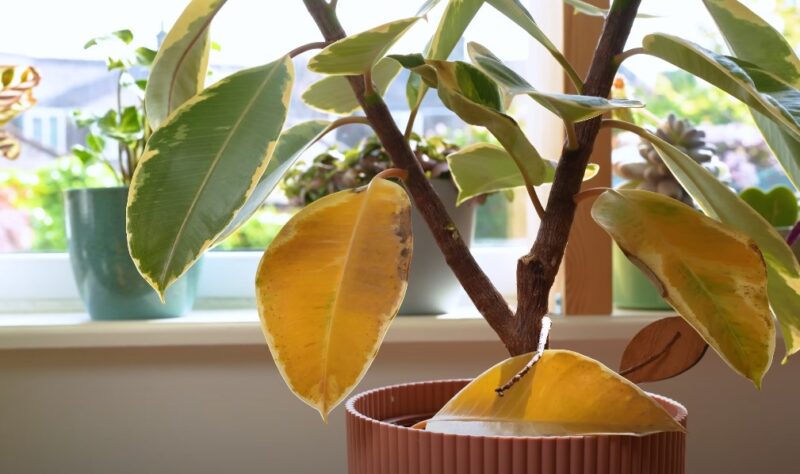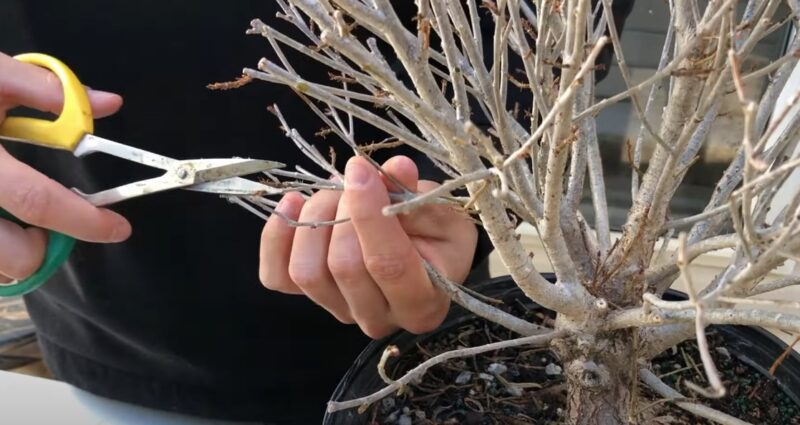If you’re reading this, chances are you have a ficus tree that’s seen better days. Don’t worry; we’ve all been there.
Ficus trees can be a bit temperamental, but with the right care, you can nurse yours back to health. Let’s start right away and save your ficus!
Spotting the Signs of a Dying Ficus
Before we can help your ficus, we need to identify the problem. Here are some common signs that your ficus tree is struggling:
- Yellowing Leaves: This is often due to overwatering or poor drainage.
- Leaf Drop: A sign of stress, which can be caused by changes in light, temperature, or humidity.
- Wilting Leaves: This can indicate underwatering or root issues.
- Pests: Look out for tiny insects like spider mites or scale.
- Fungal Growth: Black spots or mold on the leaves can signal a fungal infection.
Resolving the Issue
Step 1: Assess the Situation

Take a good look at your ficus tree. Check the soil, leaves, and stems. Is the soil soggy or dry? Are the leaves yellow or spotted?
This initial assessment will guide you on what steps to take next.
Step 2: Adjust Watering Practices
Watering can be tricky with ficus trees. They like their soil to be moist but not waterlogged.
- Check the Soil Moisture: Stick your finger about an inch into the soil. If it feels dry, it’s time to water. If it’s still moist, hold off.
- Water Thoroughly: When you do water, ensure the water drains out of the bottom of the pot. Avoid letting the tree sit in water.
- Humidity Matters: Ficus trees love humidity. Consider placing a humidity tray (a shallow tray filled with water and pebbles) under the pot, or mist the leaves occasionally.
Step 3: Optimize Light Conditions

Ficus trees need bright, indirect light to thrive. Too much direct sunlight can scorch the leaves, while too little light can cause leaf drop.
- Find the Right Spot: Place your ficus near a window with filtered light. North or east-facing windows are ideal.
- Rotate the Pot: To ensure even growth, rotate the pot every couple of weeks so all sides get light exposure.
Step 4: Check for Pests
Pests can wreak havoc on a ficus tree. Inspect the leaves and stems closely.
- Common Pests: Spider mites, scale, and aphids are common culprits. You might see tiny webs, small brown bumps, or sticky residue on the leaves.
- Treating Pests: Wipe down the leaves with a damp cloth. For severe infestations, consider using an insecticidal soap or neem oil.
Step 5: Pruning Dead or Dying Parts

Pruning helps to remove dead or diseased parts of the plant, allowing it to focus energy on new growth.
- Identify Dead Parts: Dead branches are usually brittle and snap easily. Leaves that are completely yellow or brown won’t recover.
- Use Clean Tools: Always use sterilized pruning shears to prevent spreading disease.
- Prune Strategically: Cut back to healthy, green tissue. Avoid over-pruning as it can stress the plant further.
Step 6: Repotting if Necessary
If your ficus is root-bound or the soil is not draining well, repotting might be necessary.
- Choose the Right Pot: Select a pot that’s one size larger with drainage holes.
- Fresh Soil: Use a high-quality potting mix suitable for indoor plants.
- Gently Repot: Carefully remove the ficus from its current pot, gently tease out the roots, and place it in the new pot with fresh soil. Water thoroughly after repotting.
Step 7: Fertilize Wisely
Ficus trees benefit from regular feeding during the growing season (spring and summer).
- Use Balanced Fertilizer: A balanced, water-soluble fertilizer is ideal. Follow the package instructions for dilution and frequency.
- Avoid Over-Fertilizing: Too much fertilizer can burn the roots and damage the plant.
Step 8: Maintain Consistent Conditions
Ficus trees are sensitive to changes in their environment.
- Avoid Drafts: Keep your ficus away from cold drafts, air conditioners, and heating vents.
- Steady Temperature: They prefer a consistent temperature between 60-75°F (15-24°C).
- Regular Care: Stick to a regular care routine. Sudden changes in care can stress the plant.
FAQs
Final Thoughts
Caring for a dying ficus tree can be challenging, but with patience and the right approach, you can bring your plant back to life. Remember, the key is to provide consistent care and monitor your ficus regularly. After all, ficus is a great option if you want to create biophilic environment.
Don’t be afraid to make adjustments as needed. I hope this guide helps you and your ficus tree thrive once again.

